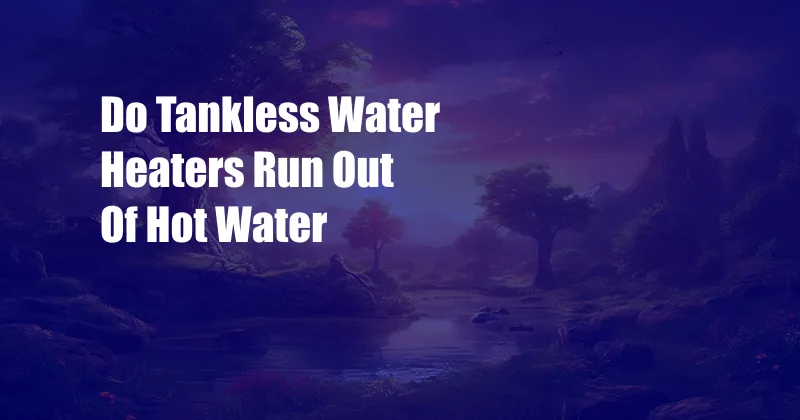
Do Tankless Water Heaters Run Out of Hot Water?
In the middle of a relaxing shower, nothing is worse than suddenly running out of hot water. It’s a common concern for homeowners considering tankless water heaters, especially if they’re accustomed to the seemingly endless supply of hot water provided by traditional tank-style water heaters.
Luckily, tankless water heaters have come a long way in recent years, and most models now provide a continuous flow of hot water as long as there’s a demand for it. Unlike tank-style water heaters that store a finite amount of hot water, tankless water heaters heat water on demand, eliminating the risk of running out. However, there are a few factors that can affect the hot water supply from a tankless water heater.
Flow Rate and Water Pressure
The flow rate of a tankless water heater is measured in gallons per minute (GPM). This number represents the amount of hot water the unit can produce at a given time. The higher the flow rate, the more hot water you’ll have available. However, the flow rate is also dependent on the water pressure in your home. If your water pressure is too low, the tankless water heater may not be able to produce enough hot water to meet your needs.
Most tankless water heaters require a minimum water pressure of 20 psi to operate properly. If your water pressure is below this level, you may need to install a booster pump to increase the pressure. You can also check for any leaks in your plumbing system, as these can also reduce water pressure.
Temperature Setting
The temperature setting on your tankless water heater will also affect the flow rate. The higher the temperature setting, the lower the flow rate. This is because the unit has to work harder to heat the water to a higher temperature. If you find that you’re running out of hot water, try lowering the temperature setting on your tankless water heater.
Multiple Fixtures
If you have multiple fixtures running at the same time, this can also affect the flow rate from a tankless water heater. For example, if you’re taking a shower and running the dishwasher at the same time, the flow rate to the shower may be reduced. This is because the tankless water heater has to divide the flow between the two fixtures.
If you have a large household or use multiple fixtures at the same time, you may need to install a higher-flow tankless water heater. You can also try staggering your water use to avoid overloading the unit.
Conclusion
In general, tankless water heaters provide a continuous flow of hot water as long as there’s a demand for it. However, the flow rate can be affected by factors such as water pressure, temperature setting, and multiple fixtures. If you’re concerned about running out of hot water, be sure to choose a tankless water heater with a high flow rate and install it properly. You should also consider your water pressure and temperature needs.
Are you interested in learning more about tankless water heaters? Are you considering installing a tankless water heater in your home? Let us know in the comments below!